Beautiful Lakes of Nepal
Nepal, the land of the high Himalayan ranges, is also endowed with some of the beautiful lakes of Nepal. They range from serene glacial lakes high above the clouds to tranquil wetlands in sub-tropical valleys. These lakes attract visitors with crystal clear waters, reflection of majestic mountains, and deep spiritual significance. Whether trekking the legendary Annapurna Circuit, exploring remote national parks, or visiting cultural homelands, Nepal’s breathtaking lakes offer unparalleled experiences of nature, culture, and tranquility.
In this guide here, we explore the variety of Nepal’s breathtaking lakes, from high-altitude alpine wonders to sacred pilgrimage sites and hidden ecological treasures.
1. Rara Lake
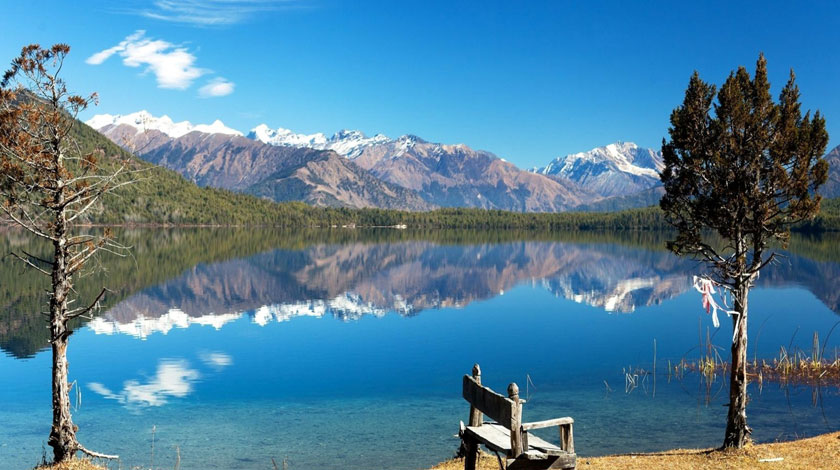
Rara Lake, or the “Queen of Lakes,” is Nepal’s largest lake. It is situated at 2,990 meters in the pristine Rara National Park in the far northwest. The lake, which covers approximately 10.8 square kilometers, is surrounded by dense coniferous forest and massive peaks. The tranquil, blue waters of the lake reflect the surrounding mountains with precision, rendering it a picture-postcard landscape.
The trek to Rara Lake is a walk through pristine nature, with the likelihood of spotting musk deer, red pandas, and many species of birds. Chuchemara Danda, a neighboring hill that rises to 4,087 meters. Offers stunning panoramic vistas of Rara and the Himalayas in the area. The remoteness of the lake results in fewer tourists, which appeals to that type of traveler who enjoys peaceful natural beauty.
2. Tilicho Lake
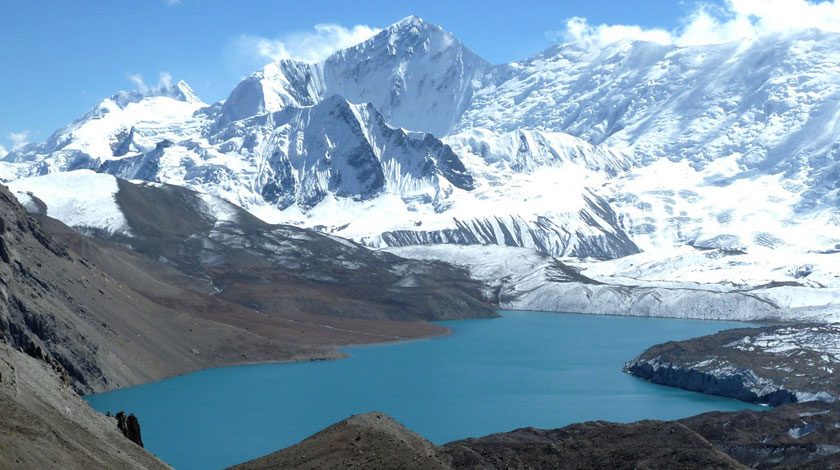
At a staggering altitude of 4,919 meters, Tilicho Lake is one of the world’s highest alpine lakes. Located in the Annapurna mountain range, the glacial-fed lake is famous for its dramatic turquoise color amidst the snow-capped mountains.
The hike to Tilicho Lake is a subset of the well-known Annapurna Circuit but entails extra effort to traverse the difficult Thorong La pass. The trail passes through rough terrain, with stunning views of Annapurna I, Nilgiri, and other mountains. The high altitude and unspoiled nature of Tilicho Lake give trekkers a feeling of isolation and awe-inspiring beauty, highlighting any Himalayan trip.
3. Shey Phoksundo Lake
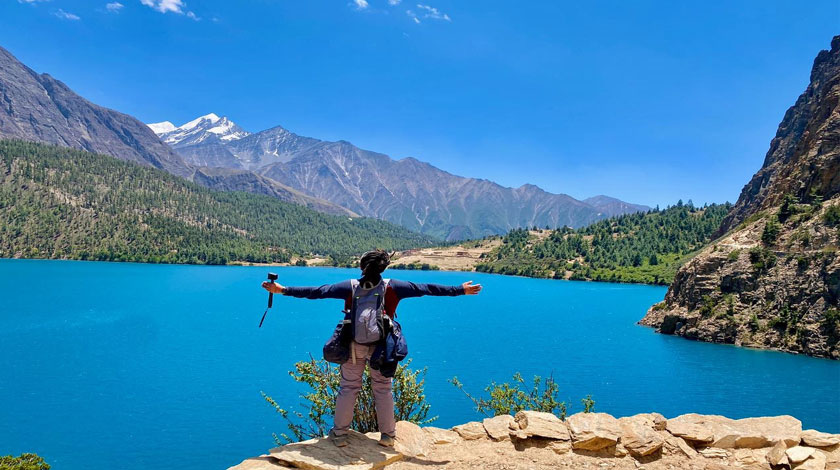
Phoksundo Lake in Dolpa District is one of the highest and most unspoiled high-altitude lakes in Nepal, at an elevation of 3,611 meters. Its crystal turquoise waters, rimmed by cliffs and Tibetan-style villages, create a dramatic and spiritual scenery. The lake is located in Shey Phoksundo National Park, Nepal’s largest national park. Which is renowned for its elusive wildlife and abundant Tibetan Buddhist culture.
Tourists can explore nearby monasteries and stupas, gaining an appreciation for the intriguing mix of nature and religion. The remoteness of the lake ensures an authentic, unadulterated experience.
4. Gokyo Lakes
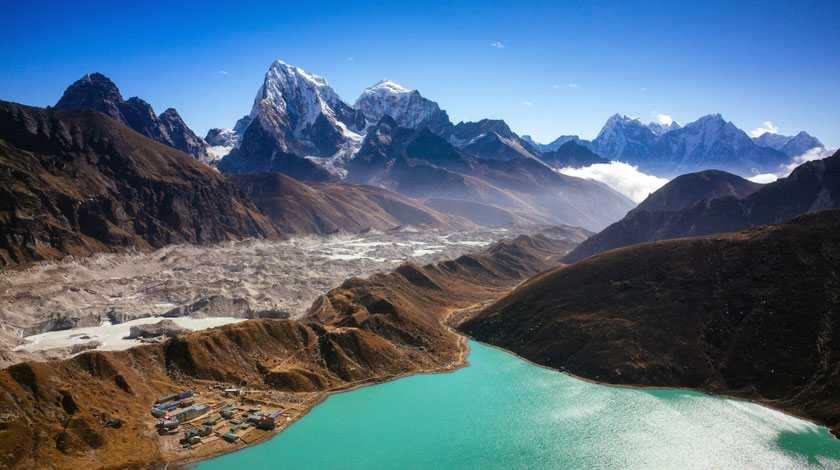
The Gokyo Lakes are a group of six glacial lakes in the Everest region, ranging from 4,700 to 5,000 meters in altitude. These stunning lakes of Nepal, part of Sagarmatha National Park, are renowned for their mesmerizing turquoise and emerald colors. The largest among them, Gokyo Lake, is one of the highest freshwater lakes on the planet.
Gokyo trekkers can see breathtaking scenery from Gokyo Ri. The nearby peak that offers heart-stopping views of Mount Everest, Lhotse, Makalu, and Cho Oyu. The Gokyo Lakes trek is a quieter, less crowded alternative or addition to the Everest Base Camp trek, offering peaceful trails and stunning glacial lake scenery.
5. Kapuche Lake
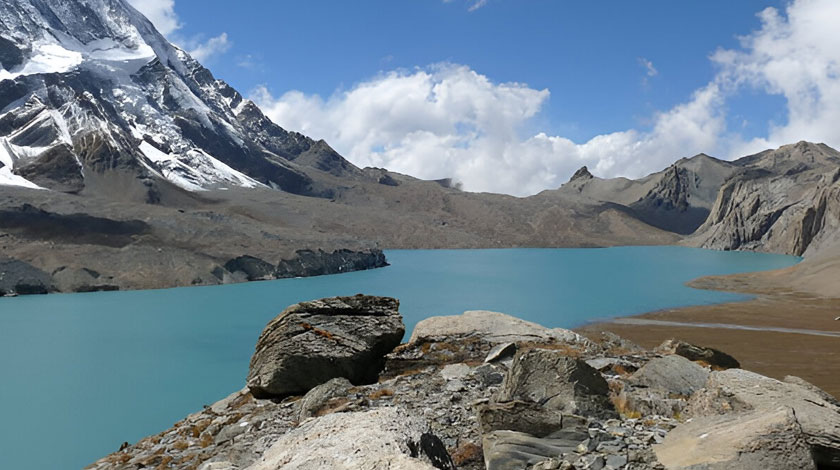
Kapuche Lake, at about 2,546 meters in the Kaski District, is one of the lower-altitude glacial lakes in Nepal. This idyllic lake in Nepal is surrounded by traditional Gurung settlements and dense forests, forming a perfect blend of nature and culture. Visitors typically combine a trip to Kapuche with hikes along the Annapurna foothills, soaking in the tranquillity and hospitality of local villages.
6. Birendra Lake
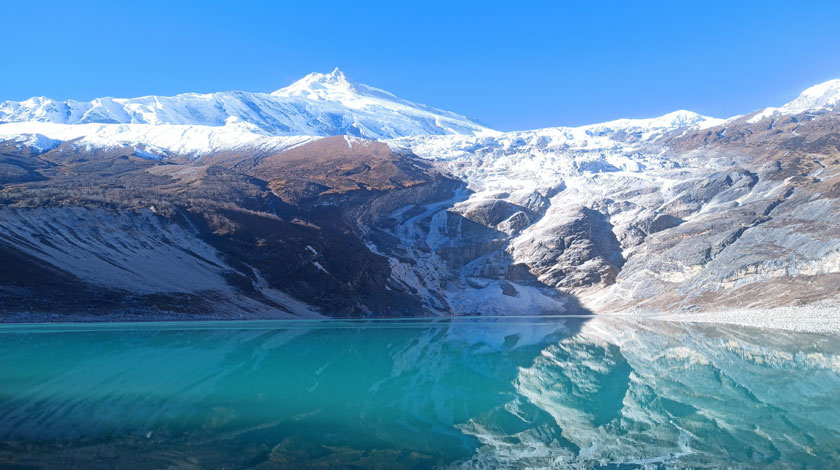
Located at the foot of the Manaslu Glacier in the Gorkha District. Birendra Lake is a remote and beautiful lake in Nepal regularly visited by Manaslu Circuit trekkers. The crystal clear glacial lake water reflects the surrounding Himalayan giants and provides a peaceful resting spot on a demanding trekking path. Due to its remoteness, it receives fewer visitors and unspoiled natural beauty.
7. Gangapurna Lake
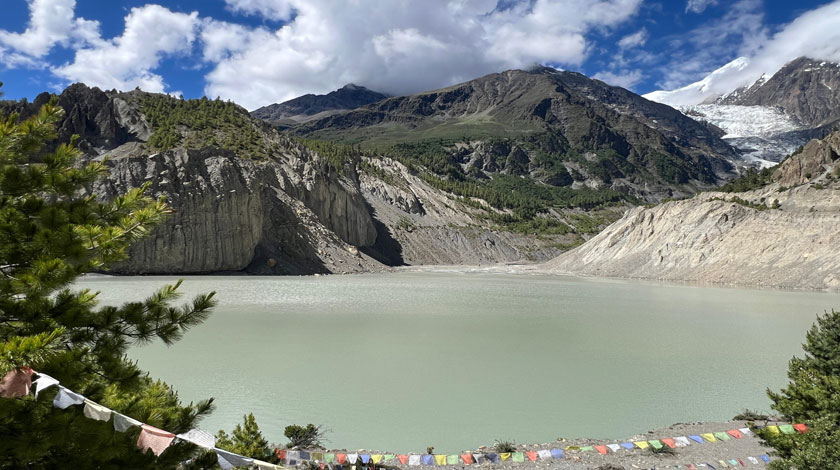
Gangapurna Lake, which was formed by the melting Gangapurna Glacier, lies near Manang at an altitude of around 4,300 meters. This picturesque lake in Nepal offers spectacular views of Gangapurna Peak and the nearby snowfields. Trekkers on the Short Annapurna Circuit often visit to take in the dramatic reflections and enjoy the serene ambiance.
8. Gosaikunda Lake
Gosaikunda is one of Nepal’s most beautiful sacred lakes in Nepal. Which is located at an elevation of 4,380 meters in Langtang National Park. According to Hindu mythology, the lake was created when Lord Shiva struck the earth with his trident at the time of the cosmic event called Samudra Manthan. Pilgrims come here annually during the Janai Purnima festival for ritualistic baths claimed to clean. The soul and wash away sins.
The hike to Gosaikunda crosses breathtaking alpine meadows and rhododendron forests, blending natural beauty with spiritual devotion. The lake is also a sacred place for meditation for Buddhists, reflecting Nepal’s religious tolerance.
9. Kalo and Seto Kunda
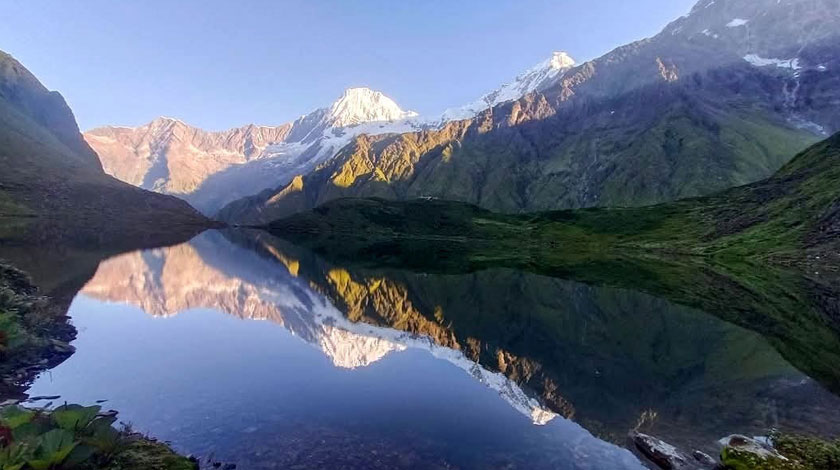
Located in the Ganesh Himal range, Kalo (Black) and Seto (White) Kunda are twin lakes that are sacred to locals for their spiritual power. These beautiful lakes in Nepal are believed to bring blessings and good fortune to visitors. The peaceful atmosphere and dramatic contrasts of the dark and light lakes render. This a popular destination for the best view of the Ganesh himal, religious pilgrims and nature enthusiasts alike.
10. Tsho Rolpa Lake
Tsho Rolpa Lake, situated at 4,580 meters in the Rolwaling Valley, is one of Nepal’s largest glacial lakes and a significant source of freshwater for downstream communities. Its stunning turquoise water is ringed by towering mountain cliffs, rendering it a breathtaking destination for trekkers and nature lovers.
The lake has been of interest to environmental scientists who are concerned about glacial melting and the possibility of flood danger. Conservation initiatives are in place to watch over and safeguard this stunning lake in Nepal and its fragile ecosystem. A trek to Tsho Rolpa offers adventure as well as the chance to witness firsthand climate change effects in the Himalayas.
11. Ice Lake (Kicho Tal)
Ice Lake, or Kicho Tal, is yet another stunning high-altitude beautiful lake in Nepal near Manang. Situated at an altitude of around 4,620 meters, the lake is generally frozen, creating an icy mirror that mirrors Annapurna II, Gangapurna, and Tilicho peaks.
The trip to Ice Lake is a trek that challenges visitors with its rugged paths and icy temperatures but rewards them with sweeping vistas of the Himalayas and the chance to see an unspoiled alpine environment rarely visited by tourists. The lake is located in the Annapurna Conservation Area, which is rich in flora and fauna that survive in harsh high-altitude environments.
12. Panch Pokhari
Panch Pokhari, or the “Five Lakes,” is a collection of five Lakes at about 4,100 meters in Sindhupalchok District. It is a pilgrimage site that receives thousands of pilgrims every year, especially during festivals. The lakes are surrounded by thick forests and offer breathtaking views of the Jugal Himal mountain range. Their religious significance renders them a unique destination that offers pilgrimage alongside trekking experience.
13. Parpathi Kunda
Parpathi kunda is located in Rasuwa district near the Gatlang village on the way to Ruby valley Trek. The lake itself is the center of local festivities where locals from the area visit for blessings, rituals, and celebration. Parpathi Kunda is an ultimate example of Nepal’s natural beauty being interconnected with the country’s cultural heritage.
14. Phewa Lake
Phewa Lake in Pokhara is one of the most popular and easily accessible lakes in Nepal. Located at a lower elevation than most Himalayan lakes. The lake offers a mirror-like reflection of the Annapurna range on its still waters. The lake also has the mythological Tal Barahi Temple, which is located on a small island in the center of the lake. Where religious ceremonies are conducted on a regular basis.
Phewa Lake is full of life, with boating and lakeside restaurants, as well as cultural festivals, making it a perfect spot for tourists seeking relaxation and culture.
15. Begnas Lake
Begnas Lake, located in the Pokhara Valley, is a tranquil freshwater lake known for its calm atmosphere and fewer crowds compared to Phewa Lake. Surrounded by lush green hills and terraced farmland, it provides excellent opportunities for boating, fishing, and hiking. This beautiful lake in Nepal is perfect for travelers looking for a peaceful retreat while still being close to Pokhara’s amenities.
16. Mai Pokhari
Mai Pokhari, a Ramsar-listed wetland lake in Ilam District in eastern beautiful lakes in Nepal, is encircled by thick forests. The scenic lake of Nepal is an important habitat for migratory birds and local wildlife, hence a destination of interest for birdwatchers and ecologists. The place also holds spiritual significance for the locals and is visited during festivals.
17. Ghodaghodi Lake
Situated in the far-western region of Nepal, Ghodaghodi Lake is part of a large wetland complex that is rich in biodiversity. Including several species of birds and aquatic flora. This Nepalese subtropical lake offers a reverse landscape to that of the Himalayan lakes at high elevation, with its lush greenery and warm climate. The lake attracts eco-tourists and birdwatchers.
Why the Beautiful Lakes in Nepal Are So Special
Nepal’s beautiful lakes mirror a staggering variety of environments. From the glacial lakes at over 4,000 meters to the warm, subtropical wetlands of the south. Every lake is a living example of Nepal’s unique geography, ecology, and culture. Some are within protected national parks, which has helped preserve fragile ecosystems and wildlife habitats.
These lakes support the livelihoods of locals by attracting trekkers, pilgrims, and nature lovers, and are also important for hydrology, biodiversity, and climate. For tourists, they offer peaceful retreats, tough trekking routes, and enriching cultural experiences all in one.
Tips for Visiting Nepal’s Beautiful Lakes
- Choose the right season: Spring (March–May) and autumn (September–November) have the best weather and visibility.
- Be altitude-prepared: A few of the most stunning lakes are above 4,000 meters—acclimatize well to avoid altitude sickness.
- Benefit local communities: Stay in locally-owned lodges, hire local guides, and buy local products to promote sustainable tourism.
- Be sensitive to cultural beliefs: The majority of lakes are sacred; be respectful of local customs, such as not bathing in sacred water.
Conclusion
Nepal’s great lakes are a testament to the glory of nature and cultural wealth. Be it the freezing heights of Tilicho and Gokyo, the sacred waters of Gosaikunda, or the serene beauty of Phewa and Begnas. Each lake offers moments that touch the heart and soul of every visitor.
Whether you’re trekking challenging mountain passes, seeking spiritual renewal, or simply escaping into tranquil landscapes. The beautiful lakes in Nepal promise unforgettable memories. Start planning your journey today and discover these shimmering jewels nestled in the heart of the Himalayas.







